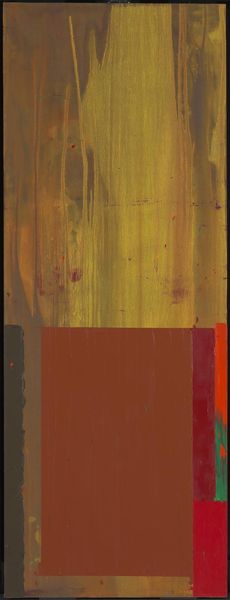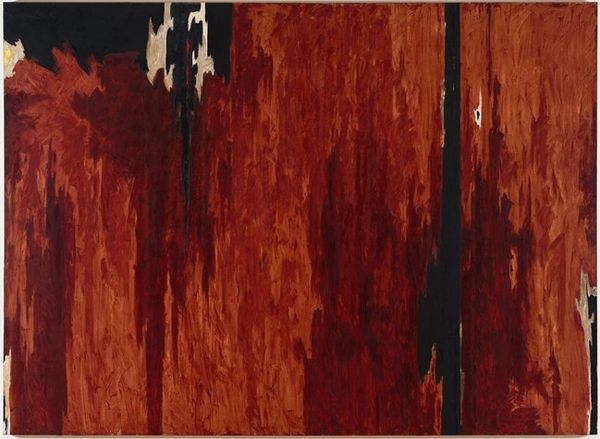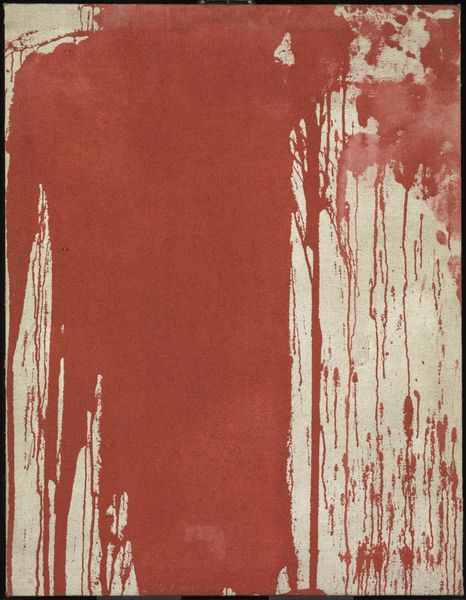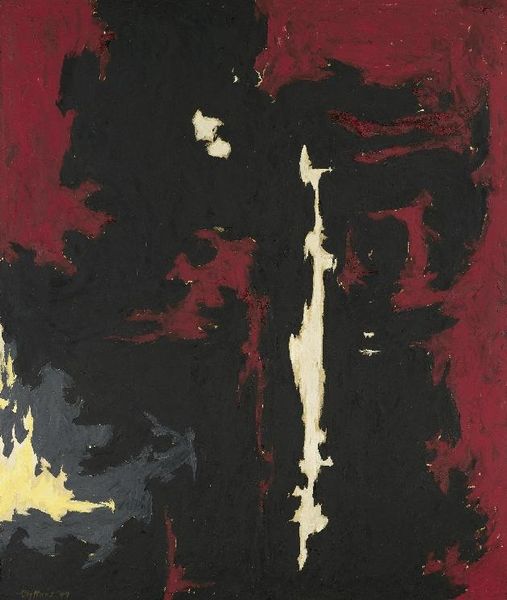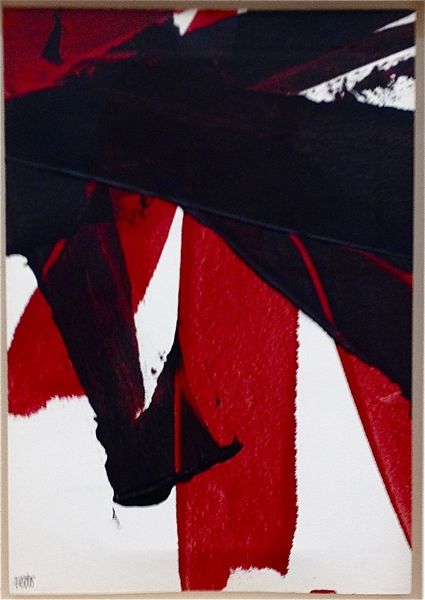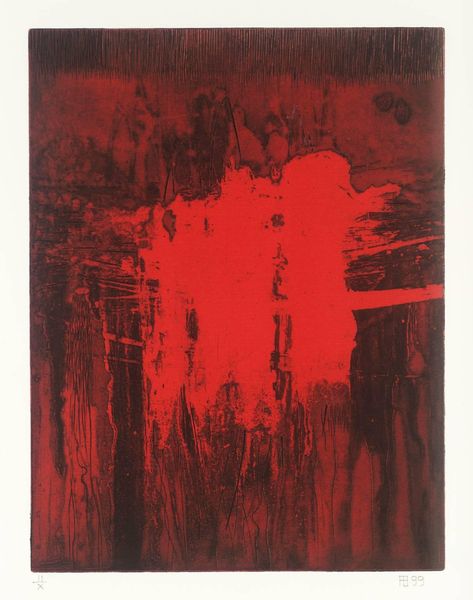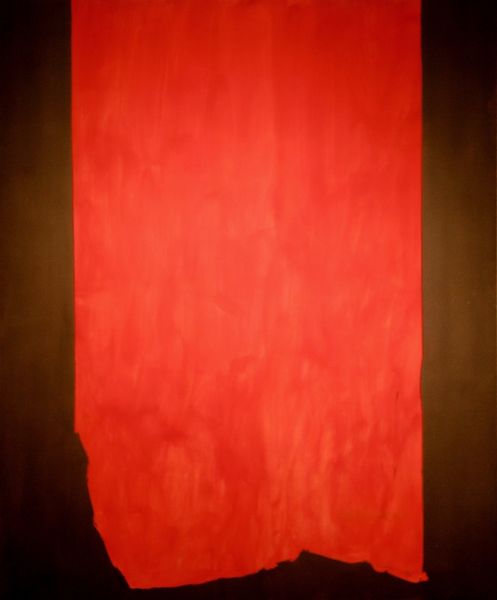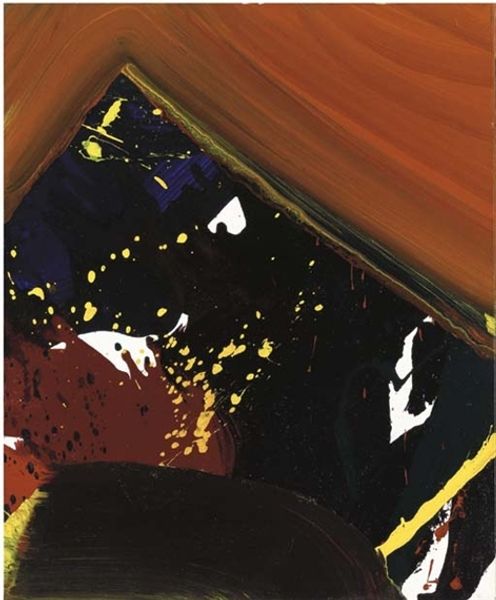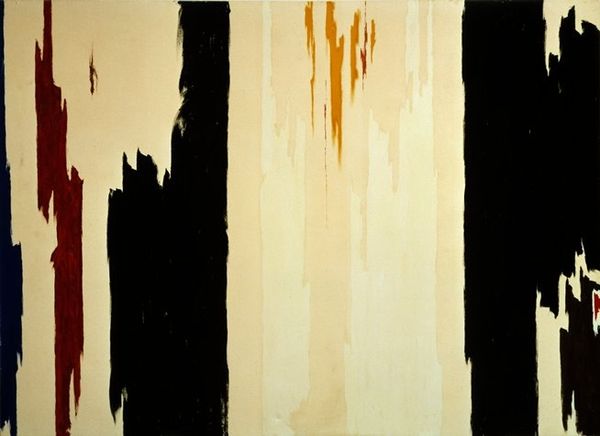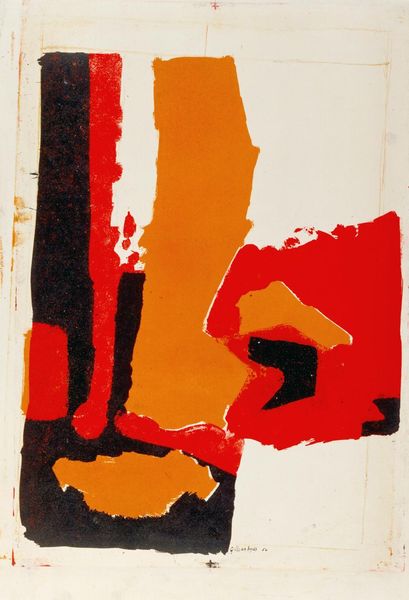
matter-painting, painting, impasto
#
abstract-expressionism
#
abstract expressionism
#
matter-painting
#
painting
#
impasto
#
abstraction
#
abstract art
Dimensions: 292 x 263 cm
Copyright: Clyfford Still,Fair Use
Curator: We’re now looking at an “Untitled” painting by Clyfford Still from 1954. It’s part of the collection at the San Francisco Museum of Modern Art. Editor: The first thing that strikes me is the dominance of the red. It’s fiery, almost aggressive, filling the majority of the canvas with this brooding energy. Curator: Absolutely. Still was a major figure in abstract expressionism. The large scale of his work and use of color fields became associated with postwar existentialism and individual expression—especially during the Cold War era when individual freedoms were highly valorized by opposition to the Soviet Union. But it is worth also recognizing Abstract Expressionism as an era defined by white male narratives, thereby omitting women and POC artists within the movement. Editor: I'm fascinated by the impasto technique, how Still applied thick layers of paint. You can almost feel the physical labor involved, the weight and drag of the brush across the canvas. I can't help thinking about what types of pigment are in the brown and red. Curator: Well, considering Still’s process, the jagged forms weren't simply painted but built up—almost violently torn. This invites interpretations related to rupture, and resistance against social structures. Note how this one vertical mark looks like it slices through the red surface, causing a deep divide. One could analyze how those breaks represent ideological schisms within our society, particularly along race and class. Editor: Right, and to emphasize Still’s material relationship, these areas are not so different from topographical lines, geological fissures created by shifts and pressure, aren't they? Still controlled impasto application but he also controlled how one color defines, confines or releases another on the surface. I wonder if Still kept production notes, or meticulously mixed pigments to produce very precise shades of dark red to sit near blacks or umbers. Curator: Sadly, not much archival material around the pigment! But those color relations absolutely influence the reading of the work in a certain sociopolitical lens. What resonates with me is that we see that art like this becomes so crucial in shaping a cultural imaginary for its audiences. Editor: Looking at it, the red really sears itself into the visual memory and reflects our dialogues surrounding Still. I feel grounded in how these considerations shed new lights onto materials. Curator: And to understand this particular work allows me a better reading of this cultural period more generally.
Comments
No comments
Be the first to comment and join the conversation on the ultimate creative platform.
